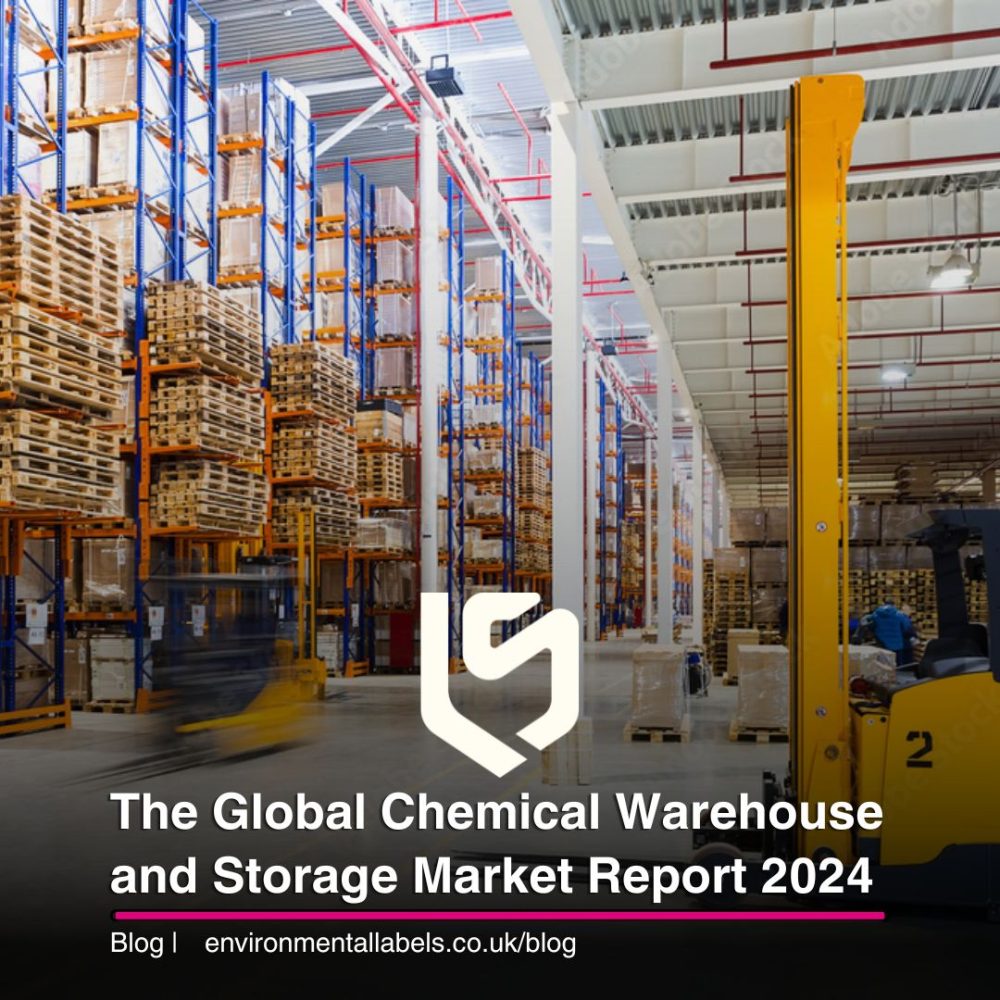The global chemical warehouse and storage market is a crucial segment within the chemical industry, serving as the backbone for safe handling, storage, and distribution of various chemicals. The industry has witnessed steady growth due to increasing industrial activities, stricter regulations on chemical safety, and rising demand from end-use sectors such as pharmaceuticals, agriculture, and manufacturing. By 2032, the market is expected to grow significantly, driven by advancements in storage technology, sustainability initiatives, and expanding industrial production across key regions.
As of 2024, the global chemical warehouse and storage market is valued at approximately USD 47.08 billion, with projections indicating a rise to USD 61.04 billion by 2032. This reflects a compound annual growth rate (CAGR) of 3.3%, driven by increasing demand for specialised storage solutions and strict regulatory compliance across industries. The market share is distributed across various types and applications, each playing a vital role in the industry’s expansion.
Market Segmentation by Type
The chemical warehouse and storage market is categorised based on the types of chemicals stored, each requiring specialised handling and containment solutions. Explosive chemicals demand high-security storage facilities due to their volatile nature, making them essential for industries such as mining, defence, and fireworks manufacturing. Proper safety measures and strict regulatory compliance are necessary to prevent potential hazards associated with these materials.
Inflammable substances, including ethanol, petroleum derivatives, and industrial solvents, require specialised fire-proof storage solutions. Given their highly flammable properties, these chemicals must be stored in controlled environments with fire suppression systems and proper ventilation to minimise risks.
Corrosive chemicals, such as acids and alkalis, are widely used in chemical manufacturing, metal processing, and cleaning applications. These substances necessitate special containment solutions to prevent leaks, corrosion, and environmental contamination. Proper labelling and secure handling protocols are critical to maintaining safety standards.
Other chemicals stored in warehouses include gases, organic compounds, and a variety of hazardous and non-hazardous materials utilised across multiple industries. Each type of chemical presents unique storage challenges, requiring companies to invest in advanced infrastructure, safety protocols, and regulatory compliance measures to ensure secure and efficient handling.
Market Segmentation by Application
The storage and warehousing of chemicals serve a wide range of industries, each with specific requirements and regulations. In the pharmaceutical sector, the demand for chemical storage continues to grow due to the increasing production of active pharmaceutical ingredients (APIs), reagents, and other chemical-based drug formulations. Strict regulatory standards, such as Good Manufacturing Practices (GMP), dictate the storage conditions for these substances to ensure product safety and efficacy.
The pesticide industry also relies heavily on specialised chemical storage solutions. Agricultural chemicals, including pesticides and fertilisers, must be stored in a manner that prevents contamination and minimises environmental risks. As global agricultural demand rises, the need for efficient and compliant chemical warehousing solutions is becoming more critical.
The chemical industry itself represents the largest segment within the market, encompassing a broad spectrum of materials used in manufacturing, coatings, adhesives, and specialty chemicals. Proper storage and inventory management are essential in this sector to maintain production efficiency, ensure worker safety, and meet regulatory compliance requirements.
Other industries also require secure chemical storage, including the food and beverage sector, the textile industry, the automotive sector, and research laboratories. Each of these industries relies on properly managed chemical warehousing to handle a variety of compounds safely, ensuring both operational efficiency and regulatory adherence.
Growth Drivers and Market Trends
The growth of the chemical warehouse and storage market is being driven by several key factors. Stricter regulatory compliance is a significant contributor, as governments around the world enforce rigorous safety and environmental regulations for storing and transporting hazardous chemicals. Compliance with frameworks such as OSHA and REACH is prompting companies to invest in advanced warehousing solutions to meet these evolving standards.
Advancements in storage technology are also playing a crucial role in market expansion. Innovations in temperature-controlled storage, automation, and real-time monitoring systems are enhancing both safety and operational efficiency in chemical storage facilities. These technological improvements help companies reduce risks associated with hazardous materials while optimising storage conditions.
Sustainability initiatives are further shaping the industry, with growing environmental concerns pushing companies to implement eco-friendly storage solutions. Warehouses powered by renewable energy and chemical recycling programmes are becoming more prevalent as businesses strive to reduce their environmental footprint.
The expansion of end-use industries such as pharmaceuticals, agriculture, and manufacturing is another factor fueling demand for specialised chemical storage infrastructure. As production increases across these sectors, the need for secure and compliant chemical storage solutions continues to rise.
Additionally, the growth of chemical trade and logistics is reinforcing the necessity for well-equipped storage facilities. The globalisation of chemical production and distribution requires warehouses that can efficiently handle international supply chains, ensuring the safe storage and timely transportation of chemical products worldwide.
Regional Analysis and Forecast by 2032
The chemical warehouse and storage market is segmented geographically into North America, Europe, Asia-Pacific, Latin America, and the Middle East & Africa. Each region contributes differently to the market’s growth:
North America – The U.S. and Canada lead this region due to well-established chemical industries and stringent regulatory policies. The growing demand for specialty chemicals and pharmaceuticals is further driving the need for advanced storage facilities.
Europe – Germany, the UK, and France dominate the European market. The region’s focus on sustainability and compliance with the European Chemicals Agency (ECHA) guidelines fosters investment in state-of-the-art chemical storage solutions.
Asia-Pacific – The fastest-growing region, led by China, India, and Japan. Rapid industrialisation, increasing chemical exports, and government initiatives supporting industrial safety standards are propelling market expansion.
Latin America – Countries like Brazil and Mexico are experiencing steady growth in the chemical industry, contributing to rising investments in warehouse infrastructure.
Middle East & Africa – The chemical industry in this region is primarily driven by oil and gas production. Investments in specialized storage facilities for petrochemicals and industrial chemicals are expected to boost market growth.
Challenges in the Chemical Warehouse and Storage Market
Despite the positive growth trends in the chemical warehouse and storage market, several challenges continue to hinder its expansion. One of the primary obstacles is the high initial investment required to establish chemical storage facilities. Significant capital is needed for infrastructure, security systems, and compliance with stringent regulatory requirements, making it a costly endeavour for businesses entering the market.
Regulatory complexities add another layer of difficulty, particularly for multinational companies. Varying regulations across different countries make it challenging to standardise warehousing operations on a global scale. Companies must navigate a complex landscape of compliance requirements, which can increase operational costs and create inefficiencies in cross-border logistics.
Environmental and safety risks also pose ongoing concerns. The storage and handling of hazardous chemicals come with the potential for spills, leaks, and accidents. These risks necessitate the implementation of advanced safety protocols, continuous monitoring, and regular inspections to ensure compliance with safety regulations and prevent environmental contamination.
Supply chain disruptions further complicate the market, as geopolitical tensions, trade restrictions, and natural disasters can impact the availability and cost of chemical storage services. Delays in transportation, restrictions on hazardous material shipments, and supply shortages can create significant challenges for businesses reliant on consistent storage and distribution. Addressing these issues requires resilient logistics strategies and investment in adaptive supply chain management solutions.
Future Outlook
The chemical warehouse and storage market is poised for steady growth, driven by regulatory advancements, technological innovations, and expanding industrial applications. By 2032, the market will witness increased investments in automation, sustainability, and safety measures to meet the evolving demands of chemical storage. Companies must focus on adopting best practices, leveraging digital solutions, and complying with regional standards to remain competitive in this dynamic industry.
As industries continue to evolve and demand for chemicals rises, the role of efficient and compliant storage solutions will be more critical than ever. By addressing existing challenges and embracing emerging trends, the chemical warehouse and storage market is set to play a pivotal role in supporting the global chemical supply chain and ensuring a safer, more sustainable future for the industry.
Labelservice are a UK leader in the supply and manufacturing of chemical labels for all types of UK businesses. For free consultation and to discuss how we can help with the supply of your product labels then please get in touch.

















